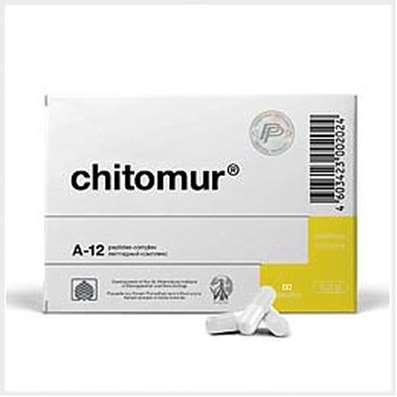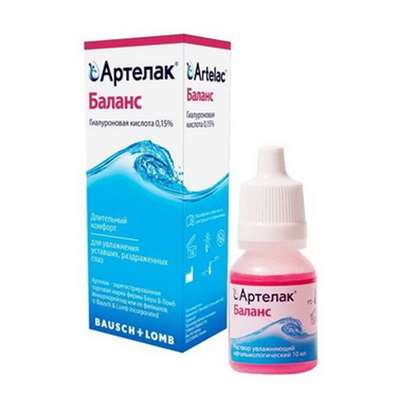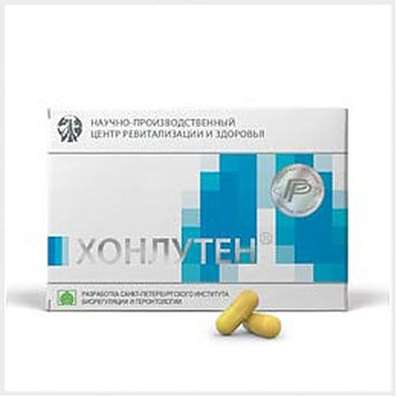Instruction for use: Losartan
I want this, give me price
The trade name of Irbesartan: Bloctran, Brozaar, Vasotens, Vero-Losartan, Zisakar, Cardomin-Sanovel, Karsartan, Cozaar, Lakea, Lozap, Losarel, Losartan, Losartan A, Losartan potassium, Losartan Canon, Losartan Macleods, Losartan-Richter, Losartan-TAD, Losartan-Teva, Lorista, Losacor, Lotor, Presartan, Renicard
Latin name of substance Irbesartan
Losartanum (genus. Losartani)
Chemical name
2-Butyl-4-chloro-1 - [[2 '- (1H-tetrazol-5-yl) [1,1'-biphenyl] -4-yl] methyl] -1H-imidazole-5-methanol (in The form of potassium salt)
Gross formula
C22H23ClN6O
Pharmacological group of substance Irbesartan
Angiotensin II receptor antagonists (AT1 subtype)
The nosological classification (ICD-10)
I10 Essential (primary) hypertension: hypertension; Arterial hypertension; Arterial hypertension crisis course; Essential Hypertension; Essential hypertension; Essential hypertension; Essential hypertension; Essential hypertension; Primary hypertension; Arterial hypertension, complications of diabetes; The sudden increase in blood pressure; Hypertensive disorders of blood circulation; hypertensive condition; hypertensive crises; arterial Hypertension; malignant Hypertension; Hypertonic disease; hypertensive crises; accelerated hypertension; malignant hypertension; The aggravation of hypertensive disease; Transient hypertension; Isolated systolic hypertension
I15 Secondary hypertension: Arterial hypertension, complications of diabetes; hypertension; The sudden increase in blood pressure; Hypertensive disorders of blood circulation; hypertensive condition; hypertensive crises; hypertension; arterial Hypertension; malignant Hypertension; hypertensive crises; accelerated hypertension; malignant hypertension; The aggravation of hypertensive disease; Transient hypertension; hypertension; Arterial hypertension; Arterial hypertension crisis course; renovascular hypertension; Hypertension symptomatic; Renal hypertension; Renovascular hypertension; renovascular hypertension; Symptomatic hypertension
I50.9 Heart failure, unspecified: Diastolic rigidity; Diastolic heart failure; Cardiovascular failure; Heart failure with diastolic dysfunction; Cardiovascular failure
CAS code
114798-26-4
Characteristics of the substance Losartan
Losartan potassium is a white or almost white crystalline powder. It is soluble in water, soluble in ethanol, poorly soluble in organic solvents (acetonitrile and methyl ethyl ketone). Molecular weight 461.01.
Pharmacology
Pharmacological action - antihypertensive.
It blocks the receptors of angiotensin II (subtype AT1) in various tissues, including the adrenal cortex, the brain, kidneys, liver, smooth muscles of the vessels, the heart and prevents the development of the effects of angiotensin II. Reduces arterial vasoconstriction, OPSS, pressure in a small circle of blood circulation, lowers the pressure of wedging in the pulmonary vessels, inhibits the release of aldosterone, prevents the retention of sodium and water in the body. Increases exercise tolerance in patients with heart failure.
After a single dose, the hypotensive effect (decrease of the SAD and DAD) reaches a maximum after 6 hours and gradually (within 24 hours) decreases. A stable decrease in blood pressure in most patients is observed by the 3rd-6th week of the course application.
In experiments on rats and mice that received no more than 200 mg / kg / day for the most tolerated doses for 2 years, no carcinogenic effect was observed. However, in female rats, a slight increase in the incidence of adenomas of the pancreatic acini was found. In studies in vitro and in vivo, mutagenic properties were not detected. Fertility and reproductive function of male rats receiving oral doses up to 150 mg / kg / day did not change. When a dose of 100 mg / kg / day or more was administered to female rats, a decrease in the number of yellow bodies, implants, and embryos was observed
Quickly absorbed from the digestive tract. Bioavailability is low (about 33%), as during the "first passage" through the liver, losartan undergoes biotransformation by carboxylation with the participation of cytochrome P450 2C9 and 3A4 to form a basic metabolite, 10-40 times more active than the starting material. Cmax is achieved after 1 h (losartan) and 3-4 h (active metabolite), with plasma proteins binds to 98.7% (losartan) and 99.8% (metabolite), T1 / 2 is 1.5-2 h And 6-9 hours, respectively. In addition to the active carboxy derivative, several inactive metabolites are formed. The excreted by the kidneys is approximately 35% (of which 4% in unchanged form and about 6% in the form of an active metabolite), with faeces - about 60%.
Application of the substance Losartan
Arterial hypertension; Chronic heart failure (as part of combination therapy, with intolerance or ineffective therapy with ACE inhibitors); A reduction in the risk of stroke in patients with hypertension and left ventricular hypertrophy; Protection of renal function in patients with type 2 diabetes mellitus with proteinuria in order to reduce proteinuria, reduce the progression of kidney damage, reduce the risk of developing the terminal stage (preventing the need for dialysis, the likelihood of increasing serum creatinine levels).
Contraindications
Hypersensitivity, pregnancy, breast-feeding.
Restrictions
Children's age (safety and efficacy in children are not defined).
Application of pregnancy and breastfeeding
Contraindicated in pregnancy.
The action category for fetus by FDA is D.
For the duration of treatment, breastfeeding should be stopped.
Side effects of the substance Losartan
From the nervous system and sensory organs: ≥1% - dizziness, asthenia / fatigue, headache, insomnia; <1% - anxiety, sleep disturbance, drowsiness, memory disorders, peripheral neuropathies, paresthesia, hypoesthesia, migraine, tremor, ataxia, depression, syncope, ringing in the ears, taste disorder, vision change, conjunctivitis.
On the part of the respiratory system: ≥1% - nasal congestion, cough, upper respiratory tract infections (elevated body temperature, sore throat, etc.), sinusopathy, sinusitis, pharyngitis; <1% - dyspnea, bronchitis, rhinitis.
On the part of the digestive system: ≥1% - nausea, diarrhea, dyspeptic phenomena, abdominal pain; <1% - anorexia, dry mouth, toothache, vomiting, flatulence, gastritis, constipation.
From the musculoskeletal system: ≥1% - cramps, myalgia, back pain, chest, legs; <1% - arthralgia, shoulder pain, knee, arthritis, fibromyalgia.
From the cardiovascular system and blood (hematopoiesis, hemostasis): <1% - orthostatic reactions (dose-dependent), hypotension, palpitation, tachy- or bradycardia, arrhythmias, angina pectoris, anemia.
From the genitourinary system: <1% - mandatory urination, urinary tract infection, impaired renal function, weakening of libido, impotence.
From the skin: <1% - dry skin, erythema, blood flow, photosensitivity, increased sweating, alopecia.
Allergic reactions: <1% - urticaria, rash, itching, angioedema, incl. Face, lips, throat and / or tongue.
Other: ≥1% - hyperkalemia; <1% - fever, gout, increased level of hepatic transaminases and bilirubin in the blood.
Interaction
Strengthens (mutually) the effect of other antihypertensive drugs (diuretics, beta-blockers, sympatholytics). Increases the risk of hyperkalemia when combined with potassium-sparing diuretics and potassium preparations.
There was no significant pharmacokinetic interaction with hydrochlorothiazide, digoxin, warfarin, cimetidine, phenobarbital, ketoconazole and erythromycin. During simultaneous administration with rifampicin and fluconazole, a decrease in the level of the active metabolite of losartan in the blood plasma was noted. The clinical consequences of this phenomenon are not known.
Update of information
Interaction with NSAIDs, incl. Selective inhibitors of COX-2
In elderly patients, with dehydration (including diuretic-induced treatment) or with impaired renal function, the combined use of NSAIDs, including selective COX-2 inhibitors, with angiotensin II receptor blockers (including losartan) can lead to impaired renal function , Including the possibility of acute renal failure. These effects are usually reversible. In patients receiving treatment with losartan in conjunction with NSAIDs, it is necessary to periodically monitor the kidney function.
The antihypertensive effect of angiotensin II receptor antagonists, including losartan, may be weakened by NSAIDs, including selective COX-2 inhibitors.
Double blockade of RAAS
Double blockade of RAAS by antagonists of angiotensin receptors, ACE inhibitors or aliskiren is associated with an increased risk of hypotension, syncope, hyperkalemia and renal dysfunction (including acute renal failure) compared with monotherapy. It is necessary to carefully monitor blood pressure, kidney function and electrolyte balance in patients taking losartan and other drugs that affect RAAS.
Interaction with aliskiren
Contraindicated the use of losartan with aliskiren in patients with diabetes mellitus. It should be excluded the use of losartan with aliskiren in patients with renal insufficiency (glomerular filtration rate less than 60 ml / min).
The source of information
Rxlist.com
Overdose
Symptoms: hypotension, change in heart rate (tachycardia or bradycardia due to excitation of the vagus nerve).
Treatment: Forced diuresis, symptomatic therapy. Hemodialysis is ineffective.
Routes of administration
Inside.
Precautions for the substance Losartan
Patients with liver pathology (especially with cirrhosis), incl. In the history, it is necessary to prescribe smaller doses. With caution apply for bilateral renal artery stenosis or renal artery stenosis of the only kidney (increased risk of renal dysfunction), with moderate or severe renal dysfunction, congestive heart failure, in patients with dehydration (probably the development of symptomatic hypotension) or hyponatremia.

 Cart
Cart





